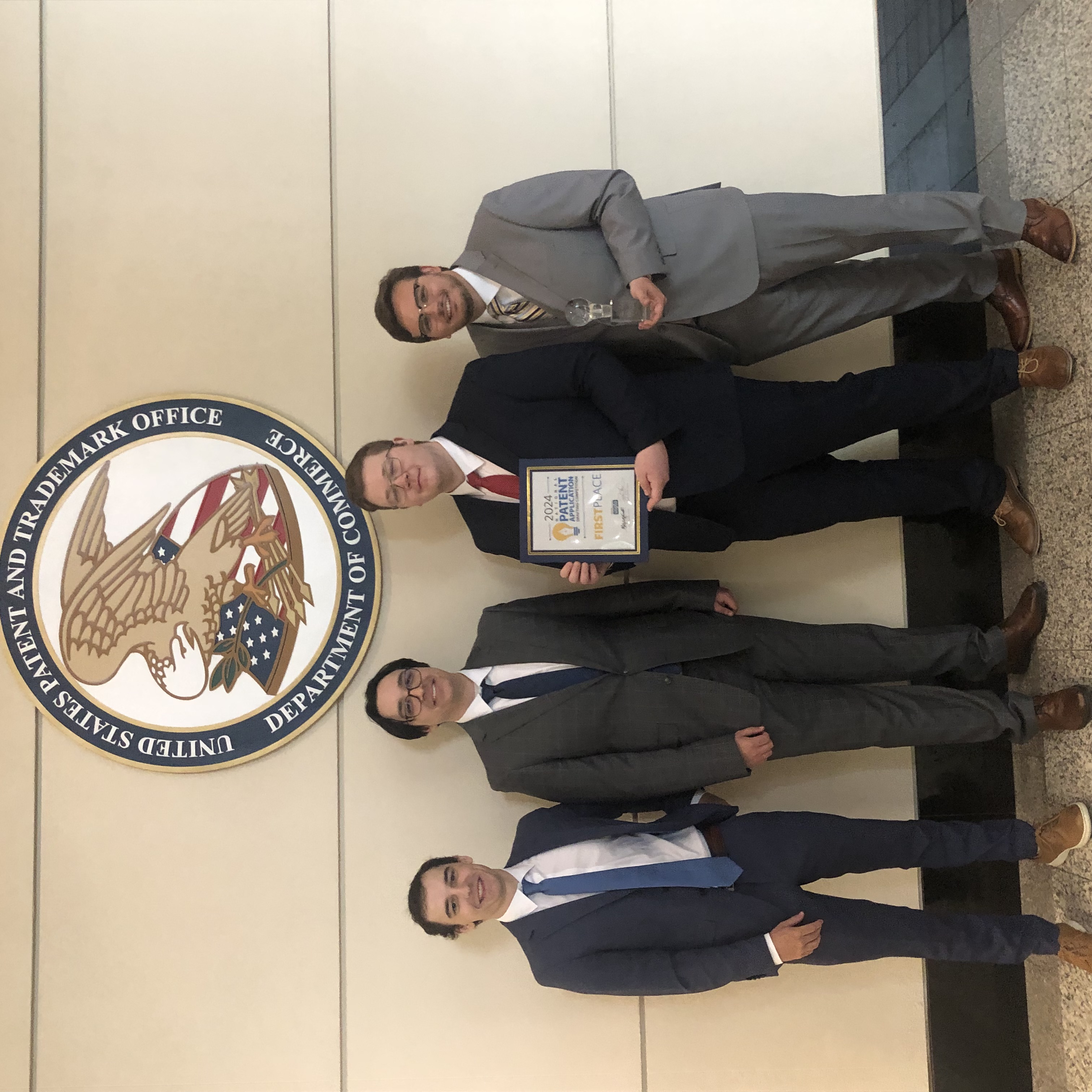By Chris Holman
Last week the U. S. Patent and Trademark Office announced the winner of this year’s National Patent Application Drafting Competition (NPADC), the University of Missouri-Kansas City School of Law. I teach patent law at UMKC, and was privileged to travel to Alexandria with the team of UMKC students (pictured below, from left to right, Will Knutson, Mark Trompeter, Joe Hooper, and Lukas Fields) to watch them compete and ultimately triumph in the final round of the competition. I am sure a great deal of the credit for their success can be attributed to our adjunct faculty members teaching patent prosecution at UMKC, James Devaney (Shook Hardy & Bacon) and Jon Hines (Senior Patent Counsel at 3Shape).

I would encourage any law student interested in pursuing a career in patent prosecution to consider participating in the competition next year. In a nutshell,
To continue reading, become a Patently-O member. Already a member? Simply log in to access the full post.